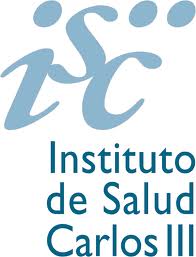Dynamics of gene regulation in bacteria
In spite of their seeming simplicity, prokaryotic organisms such as the bacteria Escherichia coli and Bacillus subtilis are able to exhibit nontrivial dynamical behavior. We monitor this behavior using fluorescence proteins as reporters of gene expression, which are measured via time-lapse microscopy. This technique provides time-resolved information about the activity of desired DNA promoters at the single-cell level, which in combination with theoretical modeling allows us to unravel the molecular mechanism of diverse cellular functions, such as competence and sporulation in B. subtilis, and the regulation of chromosome replication and its relation with cell size in E. coli.
Dynamics of pluripotency in embryonic stem cells
Embryonic stem cells have the ability to become any cell type in a multicellular organism. This property, called pluripotency, is characterized by strong dynamical signatures that have been uncovered in recent years. According to these features, certain key proteins governing pluripotency exhibit large excursions in their activity through phase space. These excursions prime the stem cells for differentiation, in order to have them ready to quickly become a particular cell type upon receiving a given external signal as the embryo develops. We are currently working on understanding the interaction between dynamics and signaling in these cells.
Dynamics of cell signaling in the immune response
The cells in the immune system, in particular T cells, must be ready to respond quickly to antigens in order to organize a rapid response to pathogens. When the system goes awry, the body runs the risk of responding too weakly to external insults (immunodeficiency) or, in the other extreme, to respond too much and attack its own cells (autoimmunity). In order to face these disorders, we need to understand how the immune system cells respond to their external triggers. Recent evidence has pointed out to the existence of an oscillatory response to cytokine stimulation in certain cell types. We are currently working on studying this response, determine its molecular mechanism, and use this knowledge to understand the response to therapy in autoimmune diseases such as multiple sclerosis.
Mesoscopic description of brain dynamics
Brain activity is naturally dynamical. EEG measures reveal a variety of rhythms (alpha, beta, gamma, etc) each of which have been associated with a distinct physiological function. One of the challenges in this field is to relate the functional measures of brain activity, routinely obtained not only by EEG but also by other techniques such as fMRI and MEG, with the underlying structure of brain connectivity. We adress this question with neural mass models that allow us to describe theoretically the activity of the full brain, and use these models to understand the dynamical correlates of neurodegenerative diseases such as Alzheimer's disease, and the neurological consequences of multiple sclerosis.
Collective oscillations in neuronal populations
Brain rhythms are generated by populations of neurons, even though the individual neurons do not necessarily fire in synchrony with these global oscillations. We are investigating how the dynamical properties of the individual neurons impact the nature of the population oscillations, and how these oscillations are affected by noise, and are used to communicate information in an effective manner across distant brain areas.
Dynamics and synchronization of semiconductor lasers
Semiconductor lasers are basic devices in today's industrial and telecommunication sectors. They operate efficiently and reliably, but on the other hand they are also very sensitive to external perturbations, which easily cause them to exhibit strong dynamical behavior. We use this feature as a proxy to investigate experimentally fundamental topics such as the emergence and synchronization of chaos, and their use in communication systems that encode and transmit information in an efficient and robust way.
Funding




